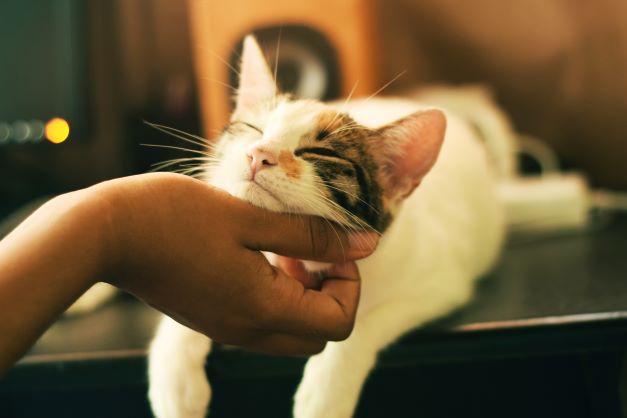4 min read
683 words
Cats. They’re enigmatic, independent, and often misunderstood creatures. For years, I admired them from afar, thinking a deep bond was reserved for dog owners. Then, Luna entered my life, a tiny ball of fur with bright green eyes and a surprisingly loud purr. I quickly realized that building a connection with a cat is a unique and rewarding journey, one that requires patience, observation, and a willingness to learn their specific language.
Deciphering the Feline Code

The first step in bonding with Luna was understanding that cats communicate differently than dogs. Tail wags don’t necessarily mean happiness; a slow blink is a sign of trust, and a high-pitched meow is often a request for attention. I spent hours observing Luna, noticing her subtle cues: the twitch of her ears when she was curious, the way she kneaded my lap when she was content, and the gentle head-butts she gave me as a sign of affection.
One of the most important things I learned was the power of positive reinforcement. Instead of scolding Luna for scratching the furniture, I redirected her to a scratching post and rewarded her with praise and a treat when she used it. This not only stopped the unwanted behavior, but also strengthened our bond. I discovered that treats weren’t just a bribe; they were a way to show Luna that I appreciated her and that I was paying attention to her needs.
Playtime also became a crucial part of our routine. Armed with feather wands, laser pointers, and crinkle balls, I engaged Luna in short, interactive play sessions. This not only provided her with physical exercise but also satisfied her hunting instincts and gave us a chance to connect on a deeper level. I quickly learned her favorite toys and the types of movements that would send her into a flurry of enthusiastic leaps and pounces. It was incredibly rewarding to see her playful side emerge and to know that I was the one bringing her joy.
Building Trust and Respect with your cat

Beyond understanding her communication and engaging in play, building trust and respect was paramount to forming a genuine bond with Luna. I learned to respect her boundaries, understanding that sometimes she just wanted to be left alone. Instead of forcing cuddles, I allowed her to come to me, offering a gentle hand for her to rub against or a quiet space for her to nap nearby.
I also made sure to create a safe and comfortable environment for her. This meant providing her with plenty of clean water, a comfortable bed, and a variety of perches where she could observe her surroundings from a safe distance. Cats are naturally cautious creatures, and by providing her with a sense of security, I helped her feel more relaxed and trusting in my presence.
Another key element was consistency. I made sure to feed her at the same time each day, clean her litter box regularly, and maintain a predictable routine. This helped her feel secure and confident in her environment, knowing that her needs would be met consistently. The predictability created a sense of calm in our household, which in turn fostered a deeper connection between us.
Over time, these small acts of understanding, respect, and consistency transformed our relationship. Luna went from a wary observer to a confident companion, always happy to greet me at the door with a cheerful meow or snuggle up beside me on the couch. The gentle purrs that rumble from her chest when I stroke her fur are now music to my ears, a constant reminder of the special bond we share.
Bonding with Luna taught me that cats aren’t aloof or uncaring creatures; they simply express their affection in different ways. It requires patience, observation, and a willingness to learn their unique language. But the rewards are immeasurable. The quiet companionship, the gentle purrs, and the unconditional love of a cat are truly something special. Now, I can’t imagine my life without Luna, my furry little friend who has taught me the true meaning of the secret language of purrs.
